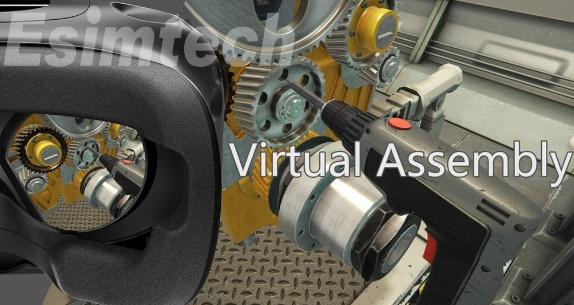The Role of Device Virtual Assembly in the Oil and Gas Transition

The oil and gas industry is undergoing a major transition, driven by the need to reduce greenhouse gas emissions and develop more sustainable energy sources. Device Virtual Assembly (DVA) is playing an important role in this transition, helping oil and gas companies to design and build more efficient and environmentally friendly facilities and equipment.
How DVA is Helping the Oil and Gas Industry to Transition
DVA is helping the oil and gas industry to transition in a number of ways:
Improved design efficiency: DVA can help oil and gas companies design and build new facilities and equipment more efficiently. Virtual models can be assembled and tested much faster than physical prototypes, and DVA can help to identify and correct design errors early in the design process. This can save oil and gas companies time and money and can help them bring new products to market more quickly.
Reduced environmental impact: DVA can help oil and gas companies reduce their environmental impact by allowing them to design more efficient and environmentally friendly devices. For example, DVA can be used to design devices that use less energy and produce fewer emissions. In addition, DVA can be used to design devices that are more easily recycled and reused.
Increased innovation: DVA can help foster innovation in the oil and gas industry by allowing engineers to experiment with new and innovative designs without having to build expensive physical prototypes. For example, DVA can be used to design devices that use new and emerging technologies, such as 3D printing and artificial intelligence. This can help oil and gas companies develop new products and services that can help them reduce their environmental impact and improve their profitability.
Examples of DVA in Use in the Oil and Gas Industry
Here are a few examples of how DVA is being used in the oil and gas industry today:
l Chevron: Chevron is using DVA to design its new offshore drilling rigs. DVA has helped Chevron to reduce the design time for its rigs by 50%.
l BP: BP is using DVA to design its new refineries. DVA has helped BP to improve the quality of its refinery designs and to reduce the cost of construction.
l ExxonMobil: ExxonMobil is using DVA to create virtual models of its pipelines. This allows ExxonMobil to identify potential problems with its pipelines before they cause a failure.
l Shell: Shell is using DVA to create virtual models of its offshore platforms. This allows Shell to plan and execute maintenance and repair operations more efficiently.
The Future of DVA in the Oil and Gas Industry
DVA is still a relatively new technology, but it is rapidly gaining adoption in the oil and gas industry. As DVA technology continues to develop and become more affordable, it is likely to play an even greater role in the oil and gas transition.
DVA has the potential to revolutionize the way that oil and gas companies design, build, and operate their assets. By improving design efficiency, reducing environmental impact, and increasing innovation, DVA can help oil and gas companies transition to a more sustainable future.
Conclusion
DVA is playing an important role in the oil and gas transition. By helping oil and gas companies to design and build more efficient and environmentally friendly facilities and equipment, DVA is helping the industry to reduce its environmental impact and to develop more sustainable energy sources. As DVA technology continues to develop and become more affordable, it is likely to play an even greater role in the oil and gas transition in the years to come.
- Art
- Causes
- Crafts
- Dance
- Drinks
- Film
- Fitness
- Food
- Games
- Gardening
- Health
- Home
- Literature
- Music
- Networking
- Other
- Party
- Religion
- Shopping
- Sports
- Theater
- Wellness


